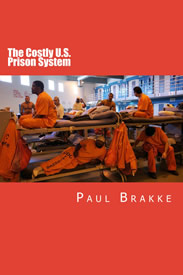Like Singapore, China has had a long history of capital punishment as a legal penalty for murder and drug trafficking, though unlike Singapore, China uses lethal injection or a gunshot. China executes more prisoners than any other country each year, in part because it has such a large population.
Approximately 2400 were executed in 2016, a decline from a period in which China executed about 12,000 individuals in 2002 , and 6500 in 2007.

China came to this resolve early during Chairman Mao’s administration in 1949. China had an enormous opium addiction problem that had been inflicted on them by the British importing opium from India throughout the 19th century to both make profits and pacify the population. Two opium wars took place in this century, and the British prevailed, even gaining Hong Kong as a result of one of the wars.
By 1906, there were 13.5 million opium addicts in China out of a total population of 400 million. Those 13.5 million addicts represented 27% of the adult male population. Now due to their crackdown on drugs, China has considerably reduced its opium problem. It has also gotten Hong Kong back, though Hong Kong is administered as an independent system, under Chinese laws.
A major reason for the death penalty is to dissuade drug trafficking, and the public nature of these executions shows China’s commitment to this policy, which has gained widespread public support. For example, in December 2017, thousands of observers watched as 10 people were sentenced to death in a sports stadium in Lufeng in the southern Guangdong providence, about 100 miles from Hong Kong. Of the 10 executed, seven were convicted of drug-related crimes, while the other prisoners were found guilty of murder and robbery.
To put on this spectacle, local residents received an official notice through the social media inviting them to attend the sentencing. As the crowd watched, a police truck with its blaring sirens arrived with the accused, who were each surrounded by four officers wearing sunglasses. Then, one by one, the accused were escorted to a small platform to hear their sentences read. After that, they were whisked away to be executed. Five months earlier, eight offenders were sentenced to death for drug crimes in a similar way.
Such open air sentencing is staged as part of China’s drug crackdown, where drug dealers are treated much like terrorists.
While such sentences are meted out as the result of a series of formal criminal proceedings, it is also a system where the prosecutor almost always wins when a case is brought to trial, since prosecutors have a 99.9% conviction rate. While China has a two or three step appeals process, in about 85% of appeals, the original verdict is confirmed. Should the judges uphold the death sentence, the defendant is soon executed.
However, offenders who are under 18 at the time of the crime cannot be given the death penalty.
These policies and procedures, in turn, provide some insights into how a death penalty case might be prosecuted in cracking down on drug offenders in the United States. For example, offenders might expect to receive a death penalty sentence if there is ample evidence to show their high level of involvement in drug trafficking, which might contribute to them providing information to arrest and convict those even higher up in their criminal organization in exchange for a more lenient sentence.
In sum, there is much we can learn about instituting a death penalty for drug trafficking in the United States, as well as in showing that the policy has widespread support, such as in having a public sentencing ceremony as has been conducted increasingly in China.
#americanleadership #deathpenalty #drugtrafficking #opioidcrisis #china




